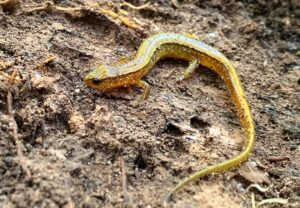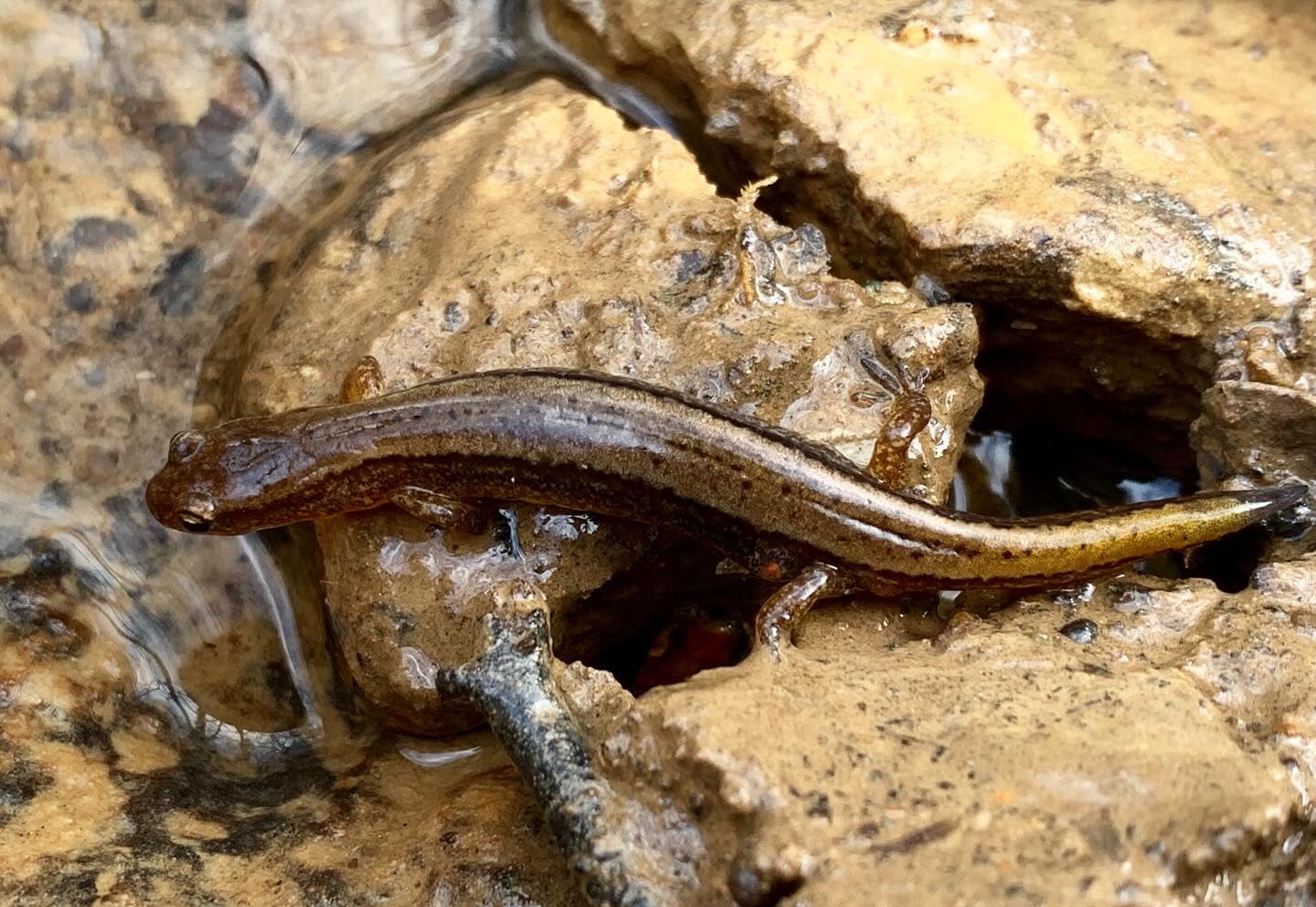by Jacob Crider
Warm January rains and plenty of snowmelt leads to great conditions for many native amphibians species here in Kentucky. While the majority of our reptiles are mostly brumating and sheltering from the cold temperatures at this time of year, amphibians with higher cold tolerance take advantage of these conditions to breed and become more active on the surface. Southern Two-lined Salamanders (Eurycea cirrigera) are a common species of brook salamander found in the Outer Bluegrass and through out most of the state. They are a dull to vibrant yellow with two lines running parallel down their back, along with occasionally black speckling. They are a small amphibian and are usually around 2-3 inches in length.

Southern Two-lined salamanders are a member of the family of salamanders known as Plethodontidae, the lungless salamanders. Members of this family do not possess lungs, rather they breathe through their skin exhibiting the process of cutaneous respiration. The majority of Kentucky’s salamander are members of this family. Brook salamanders such as Southern Two-lined salamanders can be encountered near streams, creeks and other aquatic habitats such as springs and cave openings. They are important predators of small invertebrates that live within our rocky hills and streams and improve water quality and maintain ecosystem balance by feeding on these creatures that are out of reach of other predators. Their eggs are laid usually in spring underneath rocks or other debris within streams, creeks, and springs.
Creasey Mahan’s limestone and shale streams and creeks provide adequate habitat for Southern Two-lined salamanders and a few other species of brook salamanders. While they are active in January, they will not begin breeding and laying eggs until later on in the winter before early spring.

